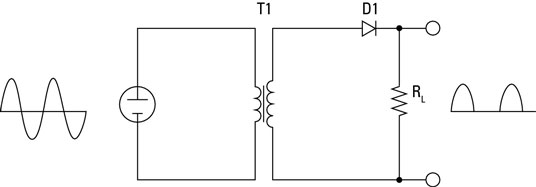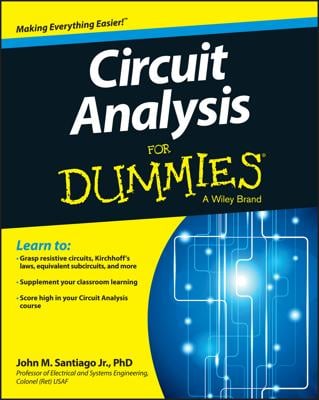The task of turning alternating current into direct current is called rectification, and the electronic circuit that does the job is called a rectifier. The most common way to convert alternating current into direct current is to use one or more diodes, those handy electronic components that allow current to pass in one direction but not the other.
Although a rectifier converts alternating current to direct current, the resulting direct current isn't a steady voltage. It would be more accurate to refer to it as “pulsating DC.” Although the pulsating DC current always moves in the same direction, the voltage level has a distinct ripple to it, rising and falling a bit in sync with the waveform of the AC voltage that’s fed into the rectifier.
For many DC circuits, a significant amount of ripple in the power supply can cause the circuit to malfunction. Therefore, additional filtering is required to “flatten” the pulsating DC that comes from a rectifier to eliminate the ripple.
There are three distinct types of rectifier circuits you can build: half-wave, full-wave, and bridge. The following describes each of these three rectifier types.
Half-wave rectifier
The simplest type of rectifier is made from a single diode. This type of rectifier is called a half-wave rectifier because it passes just half of the AC input voltage to the output.
When the AC voltage is positive on the cathode side of the diode, the diode allows the current to pass through to the output. But when the AC current reverses direction and becomes negative on the cathode side of the diode, the diode blocks the current so that no voltage appears at the output.

Half-wave rectifiers are simple enough to build but aren't very efficient. That’s because the entire negative cycle of the AC input is blocked by a half-wave rectifier. As a result, output voltage is zero half of the time. This causes the average voltage at the output to be half of the input voltage.
Note the resistor marked RL. This resistor isn’t actually a part of the rectifier circuit. Instead, it represents the resistance imposed by the load that will ultimately be placed on the circuit when the power supply is put to use.
Full-wave rectifier
A full-wave rectifier uses two diodes, which enables it to pass both the positive and the negative side of the alternating current input. The diodes are connected to the transformer.

Notice that the full-wave rectifier requires that you use a center-tapped transformer. The diodes are connected to the two outer taps, and the center tap is used as a common ground for the rectified DC voltage. The full-wave rectifier converts both halves of the AC sine wave to positive-voltage direct current.
The result is DC voltage that pulses at twice the frequency of the input AC voltage. In other words, assuming the input is 60 Hz household current, the output will be DC pulsing at 120 Hz.
Bridge rectifier
The problem with a full-wave rectifier is that it requires a center-tapped transformer, so it produces DC that’s just half of the total output voltage of the transformer.
A bridge rectifier overcomes this limitation by using four diodes instead of two. The diodes are arranged in a diamond pattern so that, on each half phase of the AC sine wave, two of the diodes pass the current to the positive and negative sides of the output, and the other two diodes block current. A bridge rectifier doesn't require a center-tapped transformer.

The output from a bridge rectifier is pulsed DC, just like the output from a full-wave rectifier. However, the full voltage of the transformer’s secondary coil is used.
You can construct a bridge rectifier using four diodes, or you can use a bridge rectifier IC that contains the four diodes in the correct arrangement. A bridge rectifier IC has four pins: two for the AC input and two for the DC output.

